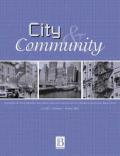
Chris Smith∗, Mary Scherer∗, and Melissa Fugerio
This study examines the relationship between gentrification and neighborhood crime rates by measuring the growth and geographic spread of one of gentrification’s most prominent symbols: coffee shops. The annual counts of neighbourhood coffee shops provide an on-the-ground measure of a particular form of economic development and changing consumption patterns that tap into central theoretical frames within the gentrification literature. Our analysis augments commonly used Census variables with the annual number of coffee shops in a neighbuorhood to assess the influence of gentrification on three-year homicide and street robbery counts in Chicago. Longitudinal Poisson regression models with neighbourhood fixed effects reveal that gentrification is a racialised process, in which the effect of gentrification on crime is different for White gentrifying neighbourhoods than for Black gentrifying neighbourhoods. An increasing number of coffee shops in a neighbourhood is associated with declining homicide rates for White, Hispanic, and Black neighbourhoods; however, an increasing number of coffee shops is associated with increasing street robberies in Black gentrifying neighbourhoods.